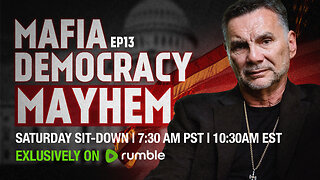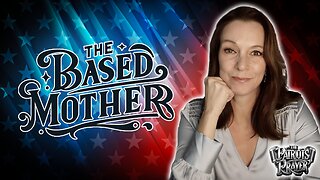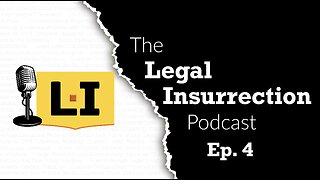An introduction to cognitive biases
Our minds are very complex, and our choices are often influenced by strange factors. Today I want to touch very briefly on the psychology of persuasion and focus particularly on cognitive biases. I can’t do justice to the topic in three minutes, but I’d like to pique your interest by mentioning a few of the factors that publishers should consider in their marketing and sales efforts.
Cognitive biases are mental shortcuts that we take to help us process the world more quickly. Evolutionary psychology might suggest that cognitive biases are generally useful – otherwise, why would we have them – but they can also lead to errors in judgment.
One of the more common is confirmation bias, which is the tendency to latch on to information that confirms our existing beliefs and to ignore or downplay contradictory evidence.
I’m not suggesting that you use confirmation bias, but that you be aware of it. For example, my friend Del sells local honey. People believe that local honey helps with allergies. Del has looked into this and says it’s not true – no matter how much he’d like it to be true. The funny thing is that it’s hard for him to convince people out of that belief, even though it would help him to promote it.
Anchoring bias is our tendency to rely too heavily on the first piece of information we receive. This is particularly relevant to headline writing. Think of all the times you read a headline, then read the story, and realized the story was deceptive. It’s also relevant in pricing. By presenting a higher price first, you establish a perception of value, and then when you present the lower price, people feel like they’re getting a deal.
Fear of loss is a very powerful tool in the marketers toolkit. People are more afraid of losing something than they’re motivated to gain something. This applies to messages like “Don’t miss out, only two days left.”
Scarcity bias is similar to fear of loss. It’s the tendency to place a higher value on something that is perceived as scarce or limited in quantity. Marketers can use scarcity tactics by highlighting limited-time offers, exclusive deals, or limited stock availability to create a sense of urgency and drive consumer action.
The bandwagon effect is the tendency to believe what everybody else believes. Marketers take advantage of the bandwagon effect with social proof, like customer testimonials, user-generated content, or even just claiming that it’s the popular choice.
The framing effect refers to how you present data. Is the meat 80% lean or 20% fat? Is $100 the full retail price of the jacket, or is it 50% off the full retail price of $200?
Choice overload – or choice paralysis – happens when there are too many options. We usually think it’s good to have options, but not always, because it’s work to figure out which is the right one?
I remember once when I was on my way to a night class, and I was dead tired. I wanted a cup of coffee and a candy bar. I stopped at a little roadside market that had 25 varieties of coffee and 600,000 candy bars. It was the only time in my life I wished I was in the Soviet Union, and my only choice was “coffee” and “candy bar.”
2 more.
The halo effect is when you extend one positive feature to the whole product, or brand. The attractive salesman must be a good person and wouldn’t lie to you, and the taller candidate must be the better leader.
The priming effect is when one stimulus influences another decision. You play Italian music and more people at your restaurant buy Italian wine, or you show happy people using your product, and people associate the product with being happy.
Obviously there are ethical implications to using these biases to manipulate consumer behavior. In my opinion, as long as you’re selling a good product, and you’re not lying, you can use these techniques without being a rotten bastard. But you’re going to have to figure that out on your own.
-
 1:05:33
1:05:33
Michael Franzese
1 day agoWhy Biden dropped out, and Kamala’s agenda to destroy America | MF LIVE | EP 13
166K189 -
 35:21
35:21
MYLUNCHBREAK CHANNEL PAGE
1 day agoOld World Underground Cities & Maps?
174K93 -
 8:07:11
8:07:11
Right Side Broadcasting Network
3 days agoLIVE REPLAY: President Trump Keynotes TPUSA Faith's Believers' Summit in West Palm Beach 7/26/24
558K368 -
 1:18:33
1:18:33
Dexerto League of Legends
1 day agoAre Fnatic REALLY Better Than G2? Is Jankos RETIRING? LEC Playoffs Review
136K11 -
 47:00
47:00
The Based Mother
1 day ago $0.07 earnedThe Based Mother Ep. 12 - Evil Olympics | Obama-Harris | Agenda 47 Prescriptions | Alexandra Levine
116K171 -
 51:01
51:01
Legal Insurrection
1 day agoWhat in the House of Cards is Going on with the Democrats?
108K45 -
 13:13
13:13
justintech
1 day ago $0.02 earnediBUYPOWER Y40 Review - The most INSANE Deal I've Seen!
93K11 -
 1:00:02
1:00:02
Trumpet Daily
1 day ago $3.56 earnedNew Regime Narrative: Biden Is George Washington, Kamala Is Obama, and Trump Is Terrified - Trumpet Daily | July 26, 2024
96.9K61 -
 13:23
13:23
JoBlo Horror Originals
1 day agoWhat Happened To John Carpenter's Village of the Damned?
68.8K25 -
 18:04
18:04
Bearing
1 day agoAva Kris Tyson, Mr. Beast and the ALLEGATIONS
65.2K43